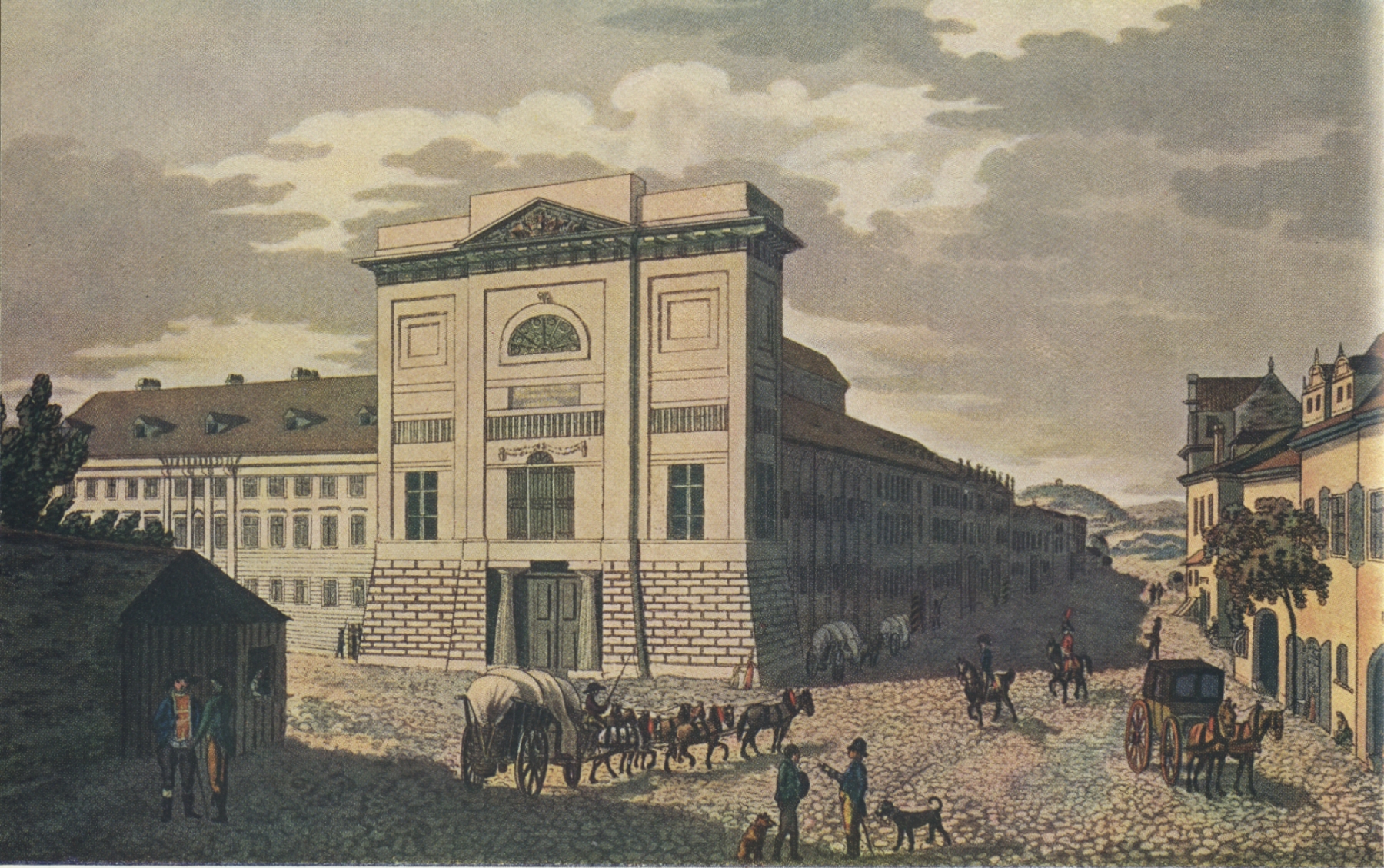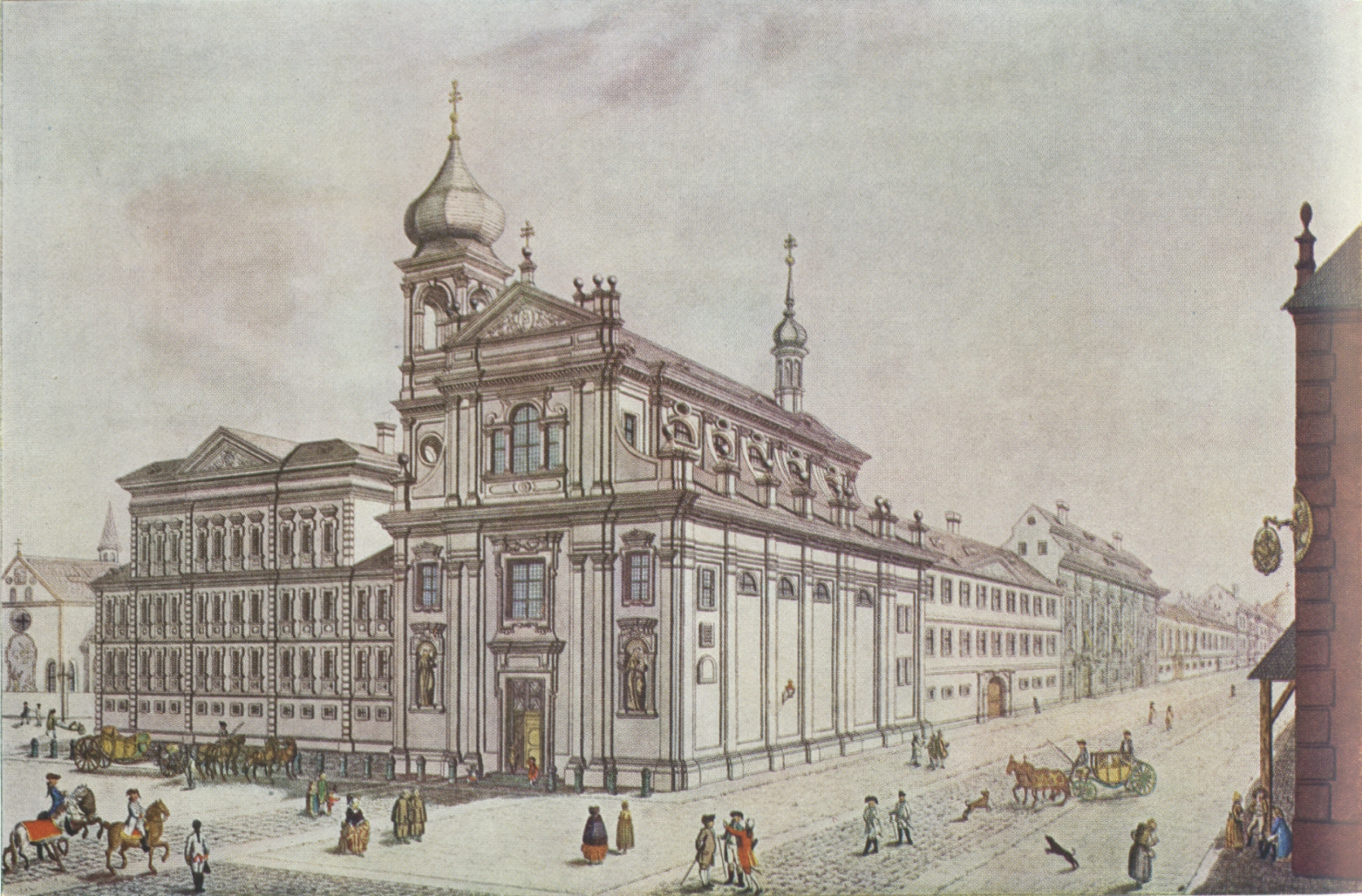Do you know how the U Hybernů Palace got its name? It is called so after the Irish Franciscans who were invited to Prague by Emperor Ferdinand II. The Franciscans were called hyberni, after the Latin name for Ireland (Hybernia). However, the history of this place goes much further back to the history.
FROM GOTHIC TO BAROQUE
In the 14th century, Emperor Charles IV invited the Vlach Benedictines, who built the monastery of St. Ambrose. However, it was plundered and destroyed during the Hussite wars in the 15th century and the building was changing its purpose and owners until 1629, when Ferdinand II donated it to the Franciscan Order of Ireland. Thanks to generous patronage, they managed to buy the surrounding houses and in 1637 they started building a new monastery and the Church of the Immaculate Conception of the Virgin Mary according to the plan of the architect Carlo Lurag. The first masses were held in the newly built church from June 1661. Thanks to its architecture and premium location, it was one of the most important churches of the early Baroque Prague.

The Franciscans flourished the monastery also thanks to their good relations with foreign countries (they are said to have been the first in Prague to grow potatoes in the monastery garden). They suffered hard by the reforms of Emperor Joseph II. In 1786, the monastery was dissolved, the entire property of the order was confiscated and redistributed to the so-called "religious fund". For a short period of time, the church was used for military masses, but the monastery was eventually taken over by wealthy businessmen who encouraged the creation of a new theatre. In 1792, the Bouda Theatre, which was one of the first ensembles to present Czech plays, moved into the building. However, due to financial issues, it closed down after a few months.

INSPIRED BY BERLIN
In 1806 the church was deconsecrated and the buildings of the monastery and the church were converted into a customs office (from here the name of the adjacent street V celnici) and received their typical Empire appearance. While the monastery itself had a not-very-distinctive regularly articulated facades, the former church building is a substantial Empire building with a characteristic massive facade with massive Doric columns. The façade is a free replica of the Gentz façade of the Berlin Mint. The majestic palace is one of the most important manifestations of the Empire style in Prague and together with the Municipal House it closes the prestigious boulevard Na příkopech.
HOME FOR CULTURE
Since then, the building has been used by various state and private institutions. For example, during the First Republic, the travel agency ČEDOK was based here. The plan was to turn the whole building into the headquarters of Czechoslovak tourism. However, another vision was to dedicate the building to culture. Between 1938 - 1949 the church was built into an exhibition hall and served this purpose until 1991, when it was closed as a dilapidated building.
It was last rebuilt in 2005 - 2006. This time it was mainly related to the internal layout, which needed to be transformed into a modern theatre hall that meets the requirements for the staging of demanding musical productions. It can provide the audience with an extraordinary experience, which is on special occasions even enhanced by the view from the reconstructed summer terrace. Come to one of our performances and see the beauty of our building for yourself.
